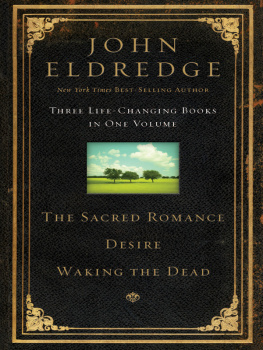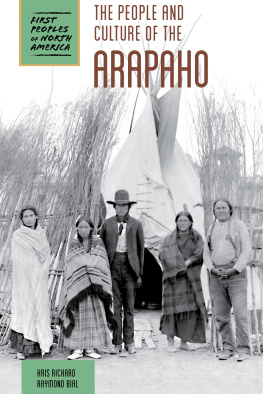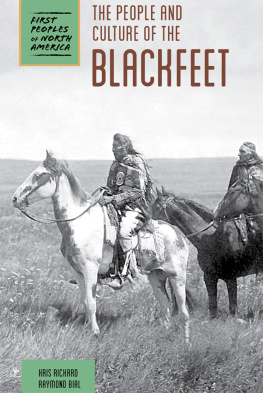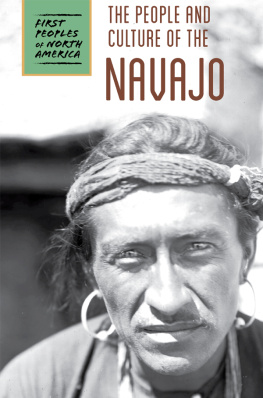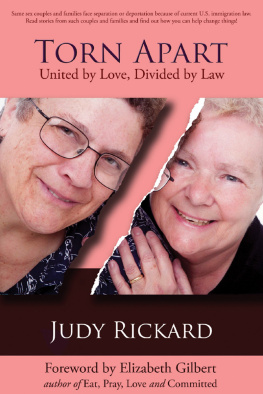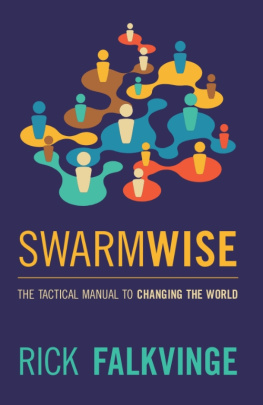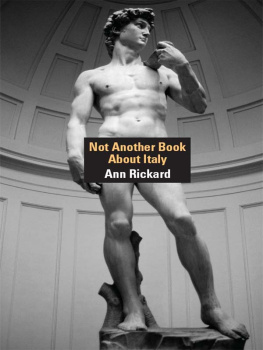A
FAMILY
ROMANCE
The Deakins at Home
John Rickard
MELBOURNE UNIVERSITY PRESS
Melbourne University Press
PO Box 278, Carlton South, Victoria 3053, Australia
First published 1996
Text John Rickard 1996
Design and typography Melbourne University Press 1996
This book is copyright. Apart from any use permitted under the Copyright Act 1968 and subsequent amendments, no part may be reproduced, stored in a retrieval system or transmitted by any means or process whatsoever without the prior written permission of the publisher.
Designed by Sandra Nobes
Typeset in Malaysia by Syarikat Seng Teik Sdn. Bhd.
Printed in Australia by Australian Print Group
National Library of Australia Cataloguing-in-Publication entry
Rickard, John, 1935.
A family romance: the Deakins at home.
Bibliography.
Includes index.
ISBN 0 522 84740 4.
1. Deakin, Alfred, 18561919. 2. Deakin family. 3. Prime ministersAustraliaBiography. I. Title.
994.041092
For Barbara
C ONTENTS
I LLUSRATIONS
between pages 38 and 39
1 A family group: Catherine, Sarah, William and baby Alfy
2 Catherine in sombre mood
3 Alfy posed for the camera
4 The drawing room at 27 Adams Street
between pages 86 and 87
5 Elizabeth Browne with her four daughters
6 A mature Catherine
7 Pattie Browne
8 Alfred as a young man
9 The drawing room at Llanarth
10 Ivy Deakin
11 Stella Deakin
12 Vera Deakin
13 From the English trip of 1900
14 Ballara, soon after it was built in 1908
15 A musical trio
16 Winwick and Llanarth in Walsh Street, South Yarra
between pages 134 and 135
17 Park House, Wellington Parade, East Melbourne
18 A composite photograph of the young Deakins
19 Pattie and Alfred, probably in 1907
20 Hugh Junor Browne
A CKNOWLEDGEMENTS
T his book grew out of a larger study centred on Alfred Deakin which is still to be completed. The Australian Research Council small grant made towards that project has incidentally assisted the research for A Family Romance .
I owe a special debt to the members of the Deakin family who showed a lively interest in my work. Jessie Deakin Clarke and Kenneth Rivett offered their recollections and gave generously of their time to answer my questions. Judith Harley made available to me the invaluable letters from Alfred to Pattie and some other papers, still held by the family, and also arranged for me to visit Ballara (a house of undoubted national historical significance). I am particularly grateful for permission to reproduce Illustrations 10,11,12,15 and 17.
Virtually all the other sources which this book draws upon come from the National Library of Australia, and I am very appreciative of the courteous assistance given me by Graeme Powell, the Manuscripts Librarian, and his staff. The Library also invited me to speak at a seminar on Alfred Deakin which provided an opportunity to exchange ideas with other scholars; the work of Al Gabay and Diane Langmore, in particular, has enriched my own.
Illustrations 1, 2, 3, 4, 5, 6, 7, 8, 9, 13, 16, 18, 19 and 20 are reproduced by permission of the National Library of Australia. Every effort has been made to locate the source of Illustration 14 of Bailara, which appeared in J. A. La Nauzes biography of Deakin, but at this stage without success.
A number of people have read all or part of the manuscript and have offered encouragement and counsel, including Ian Britain, David Chandler, Barbara Fisher and Marian Quartly. Bain Attwood suggested the title, which I have gratefully appropriated. My colleagues in the History Department and at the National Centre for Australian Studies at Monash University have heard a good deal about this project over the years and I thank them for their support.
I thank Melbourne University Press, too, for its interest in the book: in particular Teresa Pitt and Lindy Coverdale.
John Rickard
I NTRODUCTION
All happy families are alike, but each unhappy family is unhappy after its own fashion.
T olstoys opening sentence of Anna Karenina is a clever epigram, but the generalisation may depend for its plausibility on the assumption that tears and drama are more interesting to the writer-observer than smiles and domestic harmony.
The family of Alfred Deakin often saw themselves as happy, even blessed: yet from the very seeds of their happiness sprang misunderstanding, discord and, finally, schism. Through all these vicissitudes they hardly faltered in the belief that their family was unique, a city of refuge in a world that was alien and corrupt.
For many years I had been interested in Alfred Deakin, not only as a political leader whose progressive liberalism and Anglo-Australian nationalism stamped its imprint on the infant Commonwealth, but as a presiding figure who, in a period of transition, helped give expression to the cultural aspirations of an educated, younger generation. Yet even at the beginning I was aware that part of the biographical allure of Deakin stemmed from a sense of the private man behind the public figure, particularly the intensity of his inner life, a life which was remarkably documented in the papers he left behind him.
His biographers could hardly ignore this inner life. Walter Murdoch, who had known Deakin personally, conceded that his religious faith lay at the foundation of his being, but it was not a theme he pursued far in his Sketch of 1923. Forty years later J. A. La Nauze, in his magisterial survey of Deakins career, devoted a slightly embarrassed chapter to his inner life, effectively quarantining it, so that it would not infect the main narrative. It was left to Al Gabay to fully develop this aspect of the man in his recent study, The Mystic Life of Alfred Deakin .
All three biographers, however, for different reasons, have given only the sketchiest accounts of the family which surrounded Deakin. Murdoch was writing in the wake of Deakins death, with both the statesmans widow, Pattie, and his sister, Catherine, looking over his shoulder: it was politic to make only the safest of allusions to his personal attachments. La Nauze made a conscientious attempt to characterise Deakins parents, William and Sarah, as well as Catherine and Pattie, but they served only to provide a context for the heros public career. And for Gabay, focusing on Deakins life of prayer and reflection, the members of his family were as much a part of the external world as were his political colleagues.
La Nauze, however, threw out one or two tantalising hints which suggested that there was, submerged in the text, a family drama waiting to be recovered. I went in search of that drama and found much more than I had bargained for: the initial curiosity of the casual researcher was soon transformed into the compulsive quest of the biographical detective. For the story which unfolded of the emotionally charged web of relationships between Alfred, Catherine and Pattie seemed to me, in the first instance, extraordinary, even bizarre; while, at a deeper level, intensely moving, and, ultimately, tragic.
In the story I have to tell Deakin, the public figure, gives way to Alfred, son, brother, husband and father. The priorities are reversed, the public career providing a background to the life within the home. But it is well to be reminded of the trajectory of that career. Deakin was a political prodigy who entered the Victorian parliament in 1879 at the tender age of twenty-two and became a minister at twenty-six. He was in office from 1883 till 1890, from 1886 as Chief Secretary and leader of the liberal wing of the coalition government. In 1887, at the age of thirty, he represented Victoria at the first Imperial Conference in London. The defeat of the government in 1890 on the floor of the Assembly, in the wake of the bitter national maritime strike, marked the end of the first phase of Deakins career, when he was the coming man of Victorian politics. The collapse of the coalition government coincided with the end of the boom and the descent into economic depression, and Deakin, who felt implicated in the excesses of the land boom, retreated to the backbench. Throughout the 1890s he devoted himself to the federal cause and was prominent in the Conventions of 1891 and 189798. His advocacy was crucial in ensuring Victorias support for the adoption of the Constitution. Transferring to the federal sphere in 1901, he became attorney-general in the founding government of Sir Edmund Barton, and succeeded him as prime minister in 1903. For much of the first decade of the new century Deakin and his protectionist party governed with the support of Labor, implementing policies which integrated social reform into a nation-building agenda. This alliance ended in 1909 when Deakin negotiated the anti-labor fusion with his former free-trader foes: this, his last government, was swept from office at the 1910 election, which marked the beginning of the two-parry system in Australian politics. His health was already failing, and in 1913 he retired from politics. His career, extending over more than three decades, had bridged colonial and federal eras: he was not only one of the leading architects of the federation, but played a decisive role in determining the political character of the new nation and its institutions. When he died in 1919, the King hailed him as one of Australias greatest statesmen, an opinion which his family, his most loyal supporters, never doubted.




